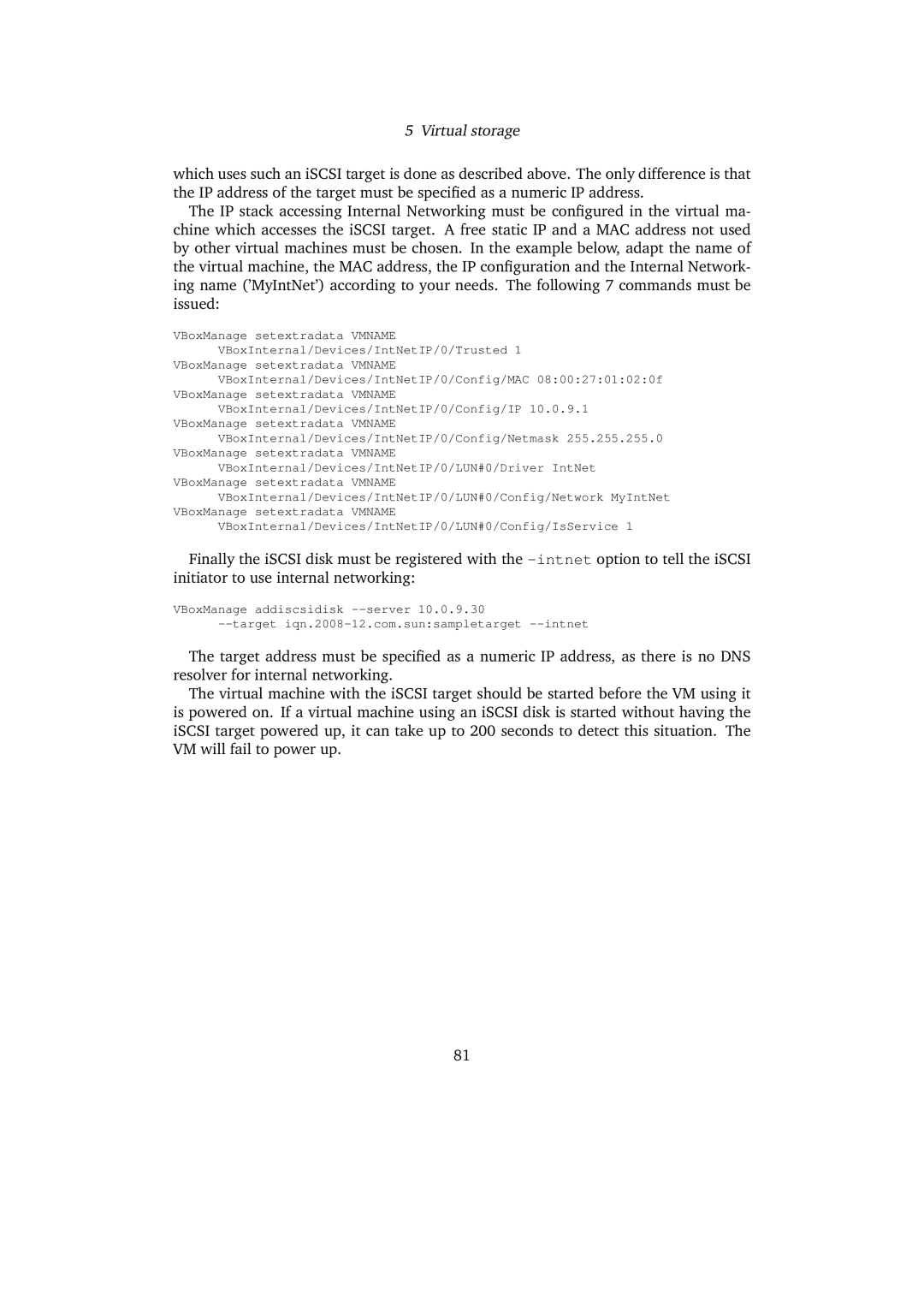5 Virtual storage
which uses such an iSCSI target is done as described above. The only difference is that the IP address of the target must be specified as a numeric IP address.
The IP stack accessing Internal Networking must be configured in the virtual ma- chine which accesses the iSCSI target. A free static IP and a MAC address not used by other virtual machines must be chosen. In the example below, adapt the name of the virtual machine, the MAC address, the IP configuration and the Internal Network- ing name (’MyIntNet’) according to your needs. The following 7 commands must be issued:
VBoxManage setextradata VMNAME VBoxInternal/Devices/IntNetIP/0/Trusted 1
VBoxManage setextradata VMNAME VBoxInternal/Devices/IntNetIP/0/Config/MAC 08:00:27:01:02:0f
VBoxManage setextradata VMNAME VBoxInternal/Devices/IntNetIP/0/Config/IP 10.0.9.1
VBoxManage setextradata VMNAME VBoxInternal/Devices/IntNetIP/0/Config/Netmask 255.255.255.0
VBoxManage setextradata VMNAME VBoxInternal/Devices/IntNetIP/0/LUN#0/Driver IntNet
VBoxManage setextradata VMNAME VBoxInternal/Devices/IntNetIP/0/LUN#0/Config/Network MyIntNet
VBoxManage setextradata VMNAME VBoxInternal/Devices/IntNetIP/0/LUN#0/Config/IsService 1
Finally the iSCSI disk must be registered with the
VBoxManage addiscsidisk
The target address must be specified as a numeric IP address, as there is no DNS resolver for internal networking.
The virtual machine with the iSCSI target should be started before the VM using it is powered on. If a virtual machine using an iSCSI disk is started without having the iSCSI target powered up, it can take up to 200 seconds to detect this situation. The VM will fail to power up.
81
